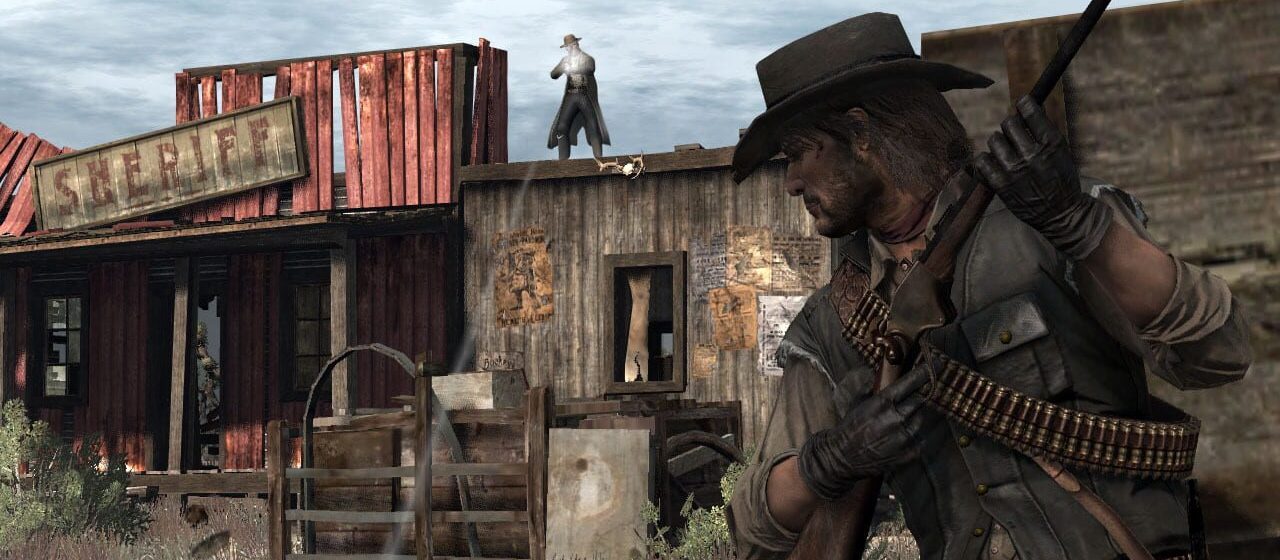
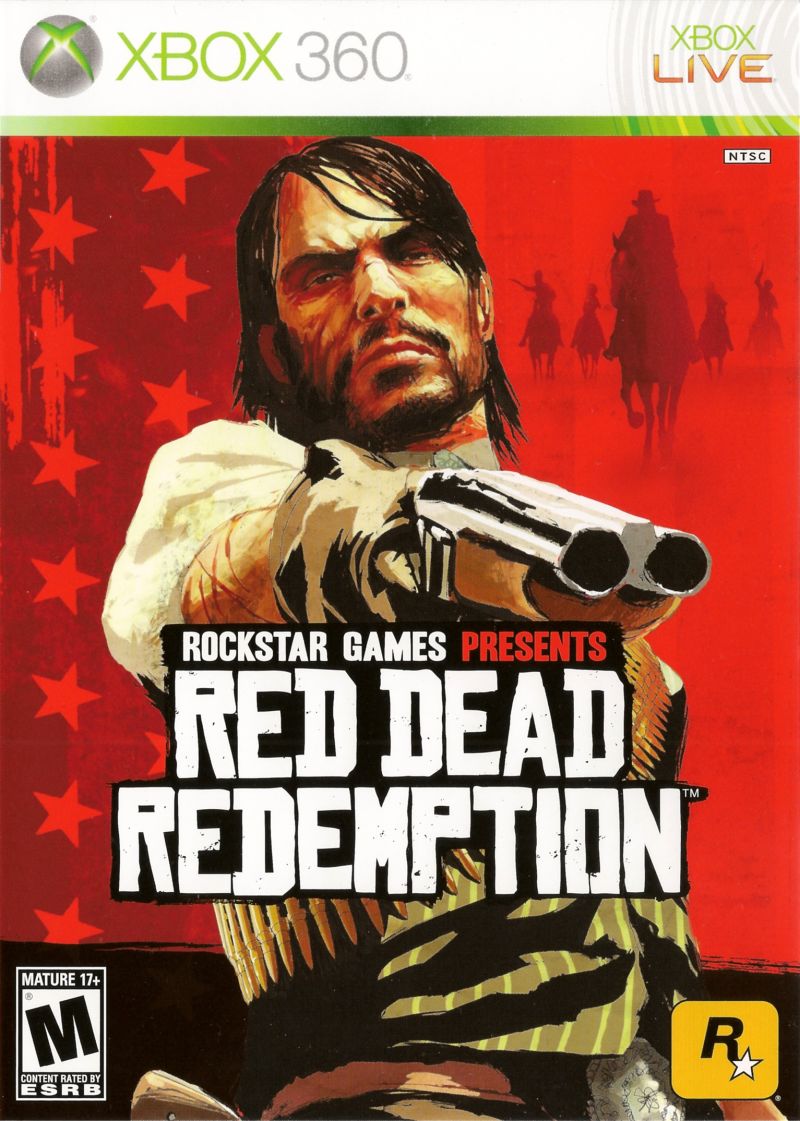
“I’ll put a hole in your hillbilly head and watch your tiny brain drain out.”
Nostalgia sways me to champion Red Dead Redemption even though I now see it as a flawed game. I fondly recall trying to rig up the Xbox 360 to the family Suburban’s auxiliary power outlet so that we could play it on the 7” flip-down television screen on the way to the lake house in Maine (it overheated after ~20 minutes). Further, when we arrived at the lake, my brothers and I—along with my sister, for perhaps the only time in her life post-N64 era—proceeded to spend the bulk of our week virtually slinging lead at outlaws instead of swimming, waterskiing, hiking, kayaking, fishing, cornholing, and all the other fun stuff that one might choose to do when vacationing on a lake.
It became an all-consuming experience; there was just so much to do. We’d push forward through a couple of story missions, passing the controller amongst the group, then get severely sidetracked hunting down grizzly bears, chasing high dollar bounties, exploring gold mines, picking herbs, bartering, and gambling. Two of us would go for a quick dip or cook hot dogs over the campfire, while the other two remained glued to the television, discovering new hideaways and stumbling upon side missions. Highlights of our exploits were enthusiastically recounted to those who missed them.
We were certainly drawn to the nihilistic tale of revenge, broken promises, political betrayals, and heartbreak set at the tail end of the Wild West era, when civilization was just starting to encroach on the lawless frontier. And it’s a solid story for a video game, even if the nature of the medium blunts some of its impact. But reformed outlaw John Marston proved to be more than the focal point of a revisionist Western rehash—he was an avatar that allowed the player to inhabit a milieu seldom seen in the gaming world. (Some players complain of Marston’s apparent lack of a strong personality. At one point he is cajoled in-game for being “intentionally enigmatic.” This is fine—he’s taciturn instead of silent like other video game heroes, but his “lack” allows the player to stand-in and make his mission their own.)
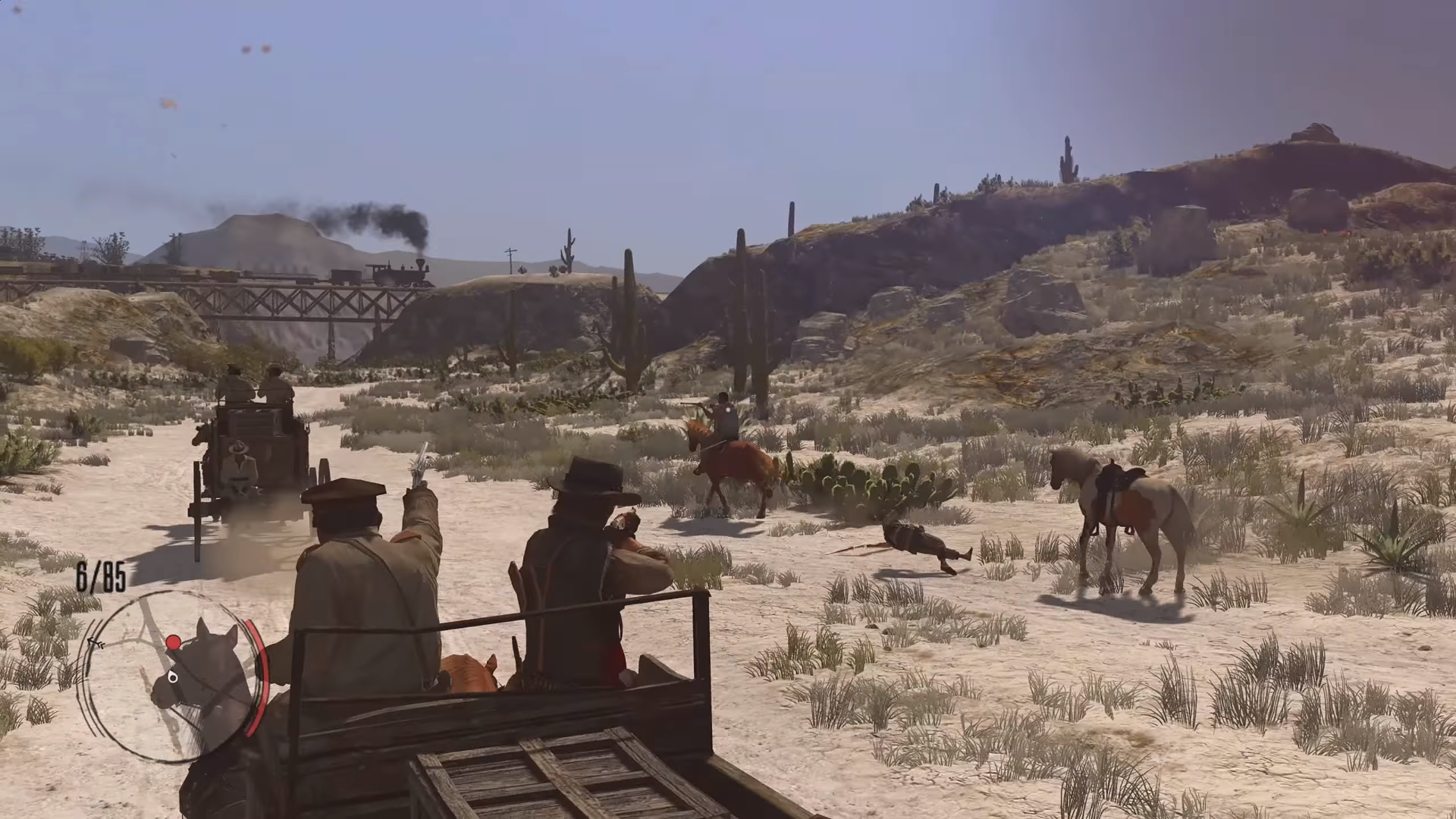
At the time, many news sites derogatorily refered to the game as “Grand Theft Auto in the Wild West” or “Grand Theft Horsey,” names that have a ring of truth but fail to acknowledge how invigorating the change of scenery actually is. It may seem like a simple shift of locales, but consider the contemporary trappings of Grand Theft Auto and then set that against the mythological texture of stories of the Old West. One comprises stuff you can see on the news every so often, the other is the stuff of legend. To be able to embody a character in the mold of Wild Bill Hickock, Jesse James, Billy the Kid, et al. is an inconceivable proposition for Western fans who have to reach back decades to find any sort of sustained popular interest in the era (outside of Rockstar’s own Red Dead Revolver, Gun, and the Call of Juarez series, the medium’s pickings are woefully slim). With the violent films of Sam Peckinpah as a starting point, Rockstar Games brought the spirit of the Old West to life in a way that no game ever had before.
The sandbox of New Austin is brimming with Wild West tropes. Tumbleweed abounds, the barren plains are littered with cacti and desert critters, railroad tracks span between small settlements, red bundles of TNT are casually deposited around mineshafts. Each little town has its own General Store where you can trade your animal skins and meat for bullets and tobacco, a saloon where you can imbibe and try your hand at various games of chance, and some even have rudimentary movie houses. When you’re not moving through the main story missions, you can find work herding cattle, breaking wild horses, and patrolling farmland to ward off threats, and a couple dozen side missions are given to the player by a handful of colorful characters.
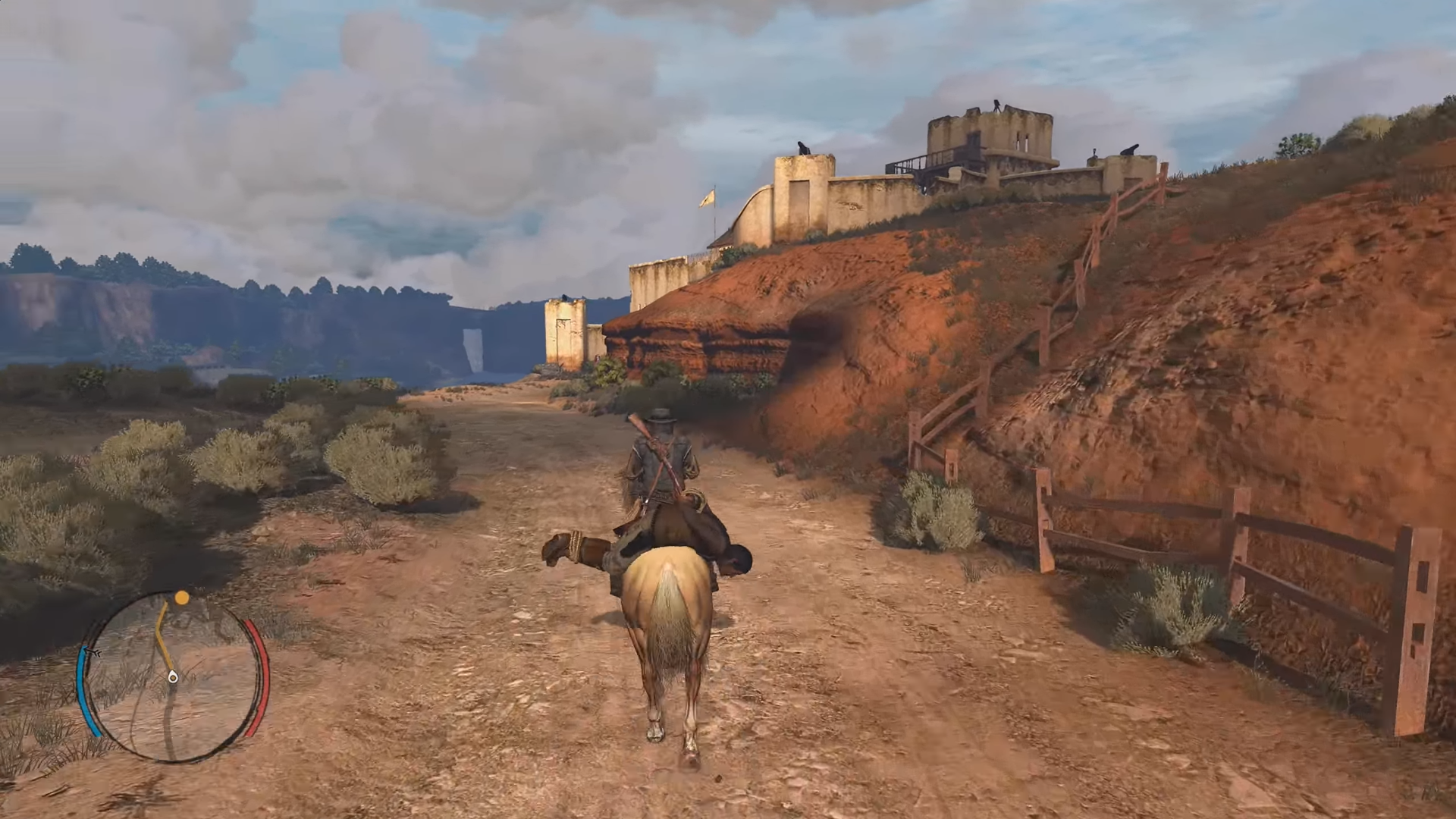
It doesn’t take much imagination to immerse yourself in such a world, but after dozens of hours spent butchering deer, picking violet snowdrop and hummingbird sage, and tossing horseshoes, it becomes clear that Red Dead Redemption is not very much of a role-playing game, if it even pretends to be one at all. When disengaged from the narrative, it’s pure atmosphere. But while you can easily lose yourself in the well realized environment, excited that the developers thought to include this or that element, this is not a game you will remain engrossed in semi-permanently. Eventually, you must get on with the story.
By contrast, if you decide never to stop and smell the roses, and instead focus only on plowing through the story—which is more or less how I played the game on my latest playthrough—you’ll be similarly underwhelmed. Missions are extremely repetitive with only a few wrinkles to the formula, such as horseback combat or the occasional use of a Gatling gun, but for the most part they are unimaginative and insufficiently rewarding. The gunplay is fine in open spaces—even if it’s made hilariously easy after an early mission gives the player a slow-mo targeting system called Dead Eye—but the cover-based mechanics and close quarters combat leave a lot to be desired. Sprinting through the story guns-blazing proves how crucial the game’s ambiance is to its overall success, because the actual gaming portion of the game is fairly pedestrian by contemporary standards.
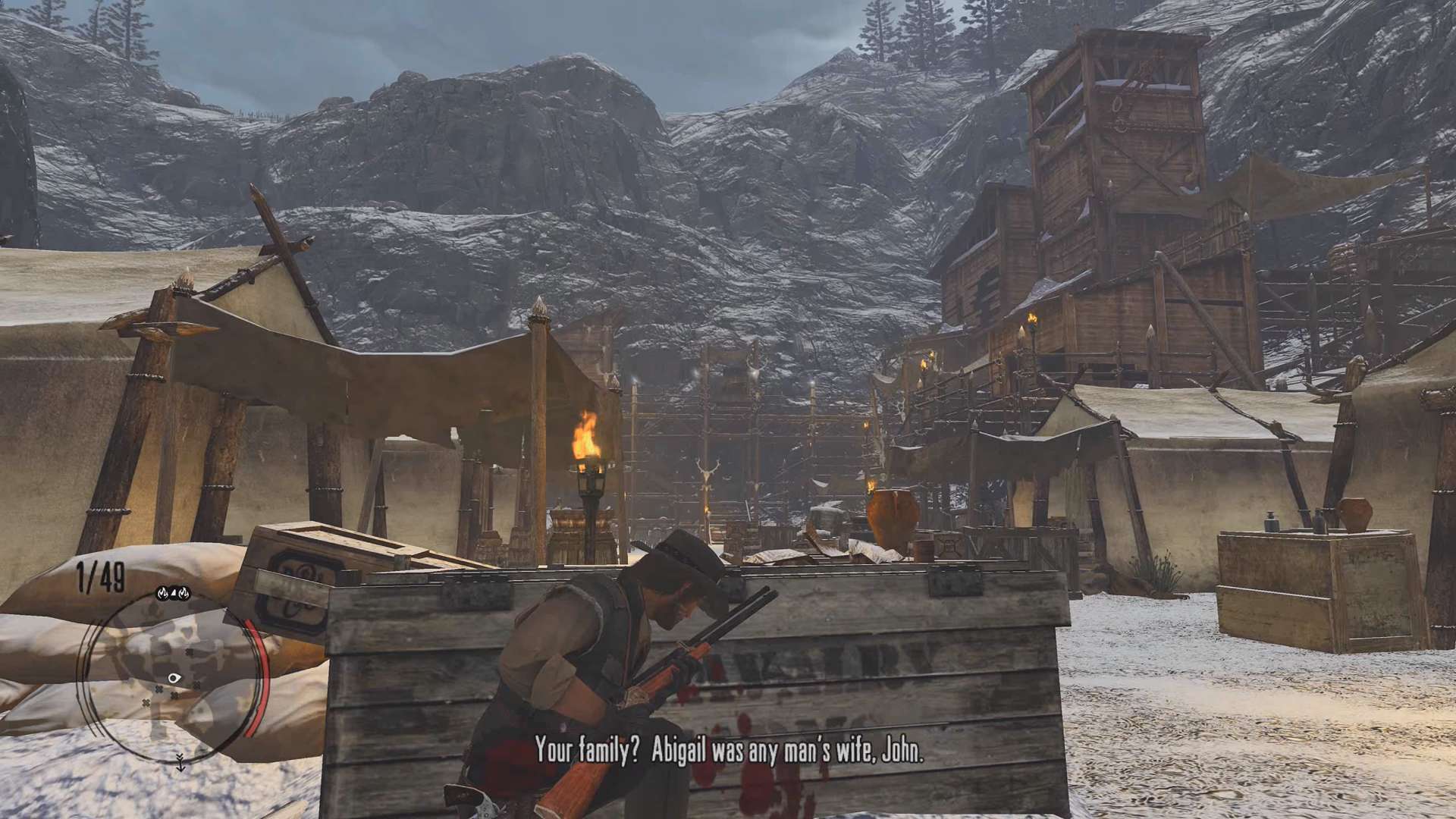
A quick runthrough also reveals a shallow, caricatured narrative that doesn’t bear up under scrutiny (especially when intertwined with the cartoonish action), even though it works quite well when it’s conveyed in fits and starts. That’s because it is only faithful to the film Western in the broad strokes, using each of its acts to portray an era of the genre (Classical, Spaghetti, then Revisionist). Thematically and stylistically it is impeccable, and it’s the setting, rather than the story or characters, that is the game’s true selling point. However, in the details it isn’t sure how to handle itself, too often undermining its own aims by discouraging emotional investment even as Marston’s story relies on it. The player assumes the role of Marston and takes on his mission to avenge his former gang who left him for dead, but once that is achieved you still have several hours of epilogue involving Marston’s family. But at no point prior to this are we given reason to invest in Marston beyond the purview of his revenge.
If you do manage to orchestrate a playthrough that perfectly mixes the main story with enjoyable meandering, you can make your way through the game in such a way as to emphasize its strengths and mask its weaknesses. I believe that’s what we did all those years ago, by accident. It’s a simple fact that the videogame world is sparsely populated with Western titles, so I’ll cherish this one along with the memory, and maybe eventually get around to its sequel.